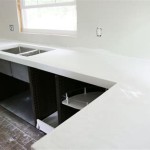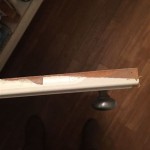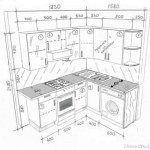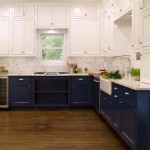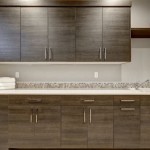Can You Use Vinyl Flooring on Kitchen Countertops? Exploring the Viability and Limitations
The question of whether vinyl flooring can be utilized as a kitchen countertop surfacing material frequently arises among homeowners seeking budget-friendly and DIY-oriented renovation options. Vinyl flooring, known for its durability, water resistance, and ease of installation, presents an initial appeal. However, a thorough examination of its properties and limitations is necessary before considering it as a viable alternative to conventional countertop materials such as granite, quartz, or laminate.
This article explores the feasibility of using vinyl flooring on kitchen countertops, delving into the potential advantages and disadvantages, focusing on relevant considerations for durability, hygiene, aesthetics, and long-term performance. The aim is to provide a comprehensive overview that aids homeowners in making informed decisions about their kitchen renovation projects.
Durability and Heat Resistance Considerations
A primary concern when evaluating any countertop material is its ability to withstand the daily wear and tear of a kitchen environment. This includes resistance to scratches, dents, stains, and, critically, heat. Vinyl flooring is generally manufactured to withstand foot traffic and resist moisture, but its inherent composition may not be adequately equipped to handle the demands placed on a kitchen countertop.
Most vinyl flooring, particularly sheet vinyl and vinyl tiles, are made of polyvinyl chloride (PVC) and various plasticizers. These materials offer good flexibility and water resistance, but they are susceptible to damage from sharp objects. Cutting directly on a vinyl countertop will likely result in scratches and gouges. Similarly, dropping heavy items could lead to dents or tears in the vinyl surface. While some modern vinyl flooring options incorporate wear layers for enhanced scratch resistance, these wear layers are typically designed for foot traffic and not the concentrated impact associated with countertop use.
Heat resistance is another critical factor. Placing hot pots and pans directly on a vinyl countertop can cause melting, warping, or discoloration. The PVC material in vinyl flooring has a relatively low melting point compared to materials such as granite or stainless steel. Even if the vinyl doesn't melt immediately, prolonged exposure to high temperatures can degrade the material over time, leading to bubbling or a loss of structural integrity. In scenarios where heat exposure is unavoidable, trivets and heat-resistant mats would be essential to prevent damage, adding an extra layer of maintenance and potential inconvenience.
Furthermore, the adhesive used to bond the vinyl flooring to the countertop substrate plays a significant role in its overall durability. Inadequate adhesive or improper application can lead to lifting, peeling, or bubbling, especially in areas exposed to moisture or temperature fluctuations. A strong, waterproof adhesive specifically designed for bonding vinyl to the chosen substrate is crucial to mitigate these risks. However, even with the best adhesive, the bond may weaken over time depending on the environmental conditions and the quality of the application.
Hygiene and Maintenance Implications
Maintaining a hygienic kitchen environment is paramount, and the chosen countertop material plays a pivotal role in preventing bacterial growth and facilitating easy cleaning. While vinyl flooring is generally easy to clean and resistant to staining, its suitability as a countertop surface in terms of hygiene requires careful consideration.
The seams and edges of vinyl flooring, particularly when using vinyl tiles or planks, present potential areas for the accumulation of dirt, grime, and bacteria. These seams, even when properly sealed, can be difficult to clean thoroughly and may harbor microorganisms that could lead to food contamination. Sheet vinyl, which minimizes seams, offers a slightly better hygienic surface, but the edges where the vinyl meets the backsplash or sink still require meticulous sealing and cleaning.
Moreover, the texture of some vinyl flooring can make it challenging to remove stubborn stains or spills completely. Embossed surfaces, while aesthetically appealing, can trap dirt and debris, requiring more vigorous cleaning methods. Harsh cleaning chemicals, while effective at removing stains, may also damage or discolor the vinyl surface, leading to a trade-off between cleanliness and material longevity. Regular cleaning with mild soap and water is generally recommended, but this may not be sufficient for removing ingrained stains or sanitizing the surface effectively.
The porous nature of some vinyl materials can also be a concern. Over time, the vinyl may absorb liquids, leading to discoloration or the development of unpleasant odors. This is particularly relevant in areas prone to spills, such as around the sink or stovetop. A high-quality sealant can help to mitigate this issue, but regular reapplication may be necessary to maintain its effectiveness. Furthermore, the sealant itself may be susceptible to wear and tear, requiring periodic replacement to ensure continued protection against moisture absorption and bacterial growth.
Aesthetic and Practical Limitations
Beyond durability and hygiene, the aesthetic appeal and practical limitations of vinyl flooring as a countertop material need to be carefully evaluated, especially in relation to the overall design and functionality of the kitchen.
While vinyl flooring comes in a wide variety of colors, patterns, and textures, its visual appearance may not align with the aesthetic preferences of all homeowners. Vinyl countertops may appear less luxurious or sophisticated compared to natural stone, quartz, or even high-end laminate options. The perceived value of the kitchen could be negatively impacted by the use of a material typically associated with flooring, particularly in high-end homes or when aiming for a more refined aesthetic.
The installation process also presents certain practical limitations. While DIY installation is possible, achieving a seamless and professional-looking finish can be challenging, particularly around sinks, faucets, and backsplashes. Precise cutting and fitting are essential to avoid gaps or overlaps, which can detract from the overall appearance and compromise the integrity of the countertop. Hiring a professional installer may be necessary to ensure a high-quality result, which can add to the overall cost and potentially negate the initial cost savings of using vinyl flooring.
Furthermore, the thickness and rigidity of vinyl flooring may not be suitable for all countertop applications. Thinner vinyl options may lack the structural support needed to span larger areas without sagging or flexing. Thicker vinyl options, while more rigid, may be more difficult to work with and may require specialized tools for cutting and shaping. The edges of the vinyl countertop will also need to be properly finished to prevent damage and create a clean, professional look. This may involve using edge banding, trim, or other finishing materials, which can add to the complexity and cost of the project.
Finally, the long-term performance of a vinyl countertop is uncertain. While vinyl flooring is durable under normal foot traffic conditions, its resistance to the stresses of countertop use has not been extensively tested or documented. Over time, the vinyl may become brittle, discolored, or damaged, requiring replacement. The lifespan of a vinyl countertop is likely to be shorter than that of more conventional countertop materials, which could lead to higher replacement costs in the long run. This factor must be considered when evaluating the overall cost-effectiveness of using vinyl flooring as a countertop material.
In conclusion, while vinyl flooring offers certain advantages in terms of cost and ease of installation, its limitations in terms of durability, heat resistance, hygiene, aesthetics, and long-term performance make it a less-than-ideal choice for kitchen countertops. Careful consideration of these factors is essential before making a decision.

Revamp Your Kitchen Counters With Sheet Vinyl Windmill Protea

Revamp Your Kitchen Counters With Sheet Vinyl Windmill Protea

Revamp Your Kitchen Counters With Sheet Vinyl Windmill Protea

Revamp Your Kitchen Counters With Sheet Vinyl Windmill Protea

We Recently Redid Our Kitchen Counters With Vinyl Floor Planks Were Going For The Butcher Block Look But This New Countertops Decor

L And Stick Wood Vinyl Planks For Countertops Flooring Kitchen Home Remodeling Mobile Homes

Revamp Your Kitchen Counters With Sheet Vinyl Windmill Protea

Countertop Idea Vinyl Plank

Diy Wood Plank Laundry Room Countertop Kitchen Flooring Vinyl Planks

How Do You Match Kitchen Flooring With Countertops
Related Posts


